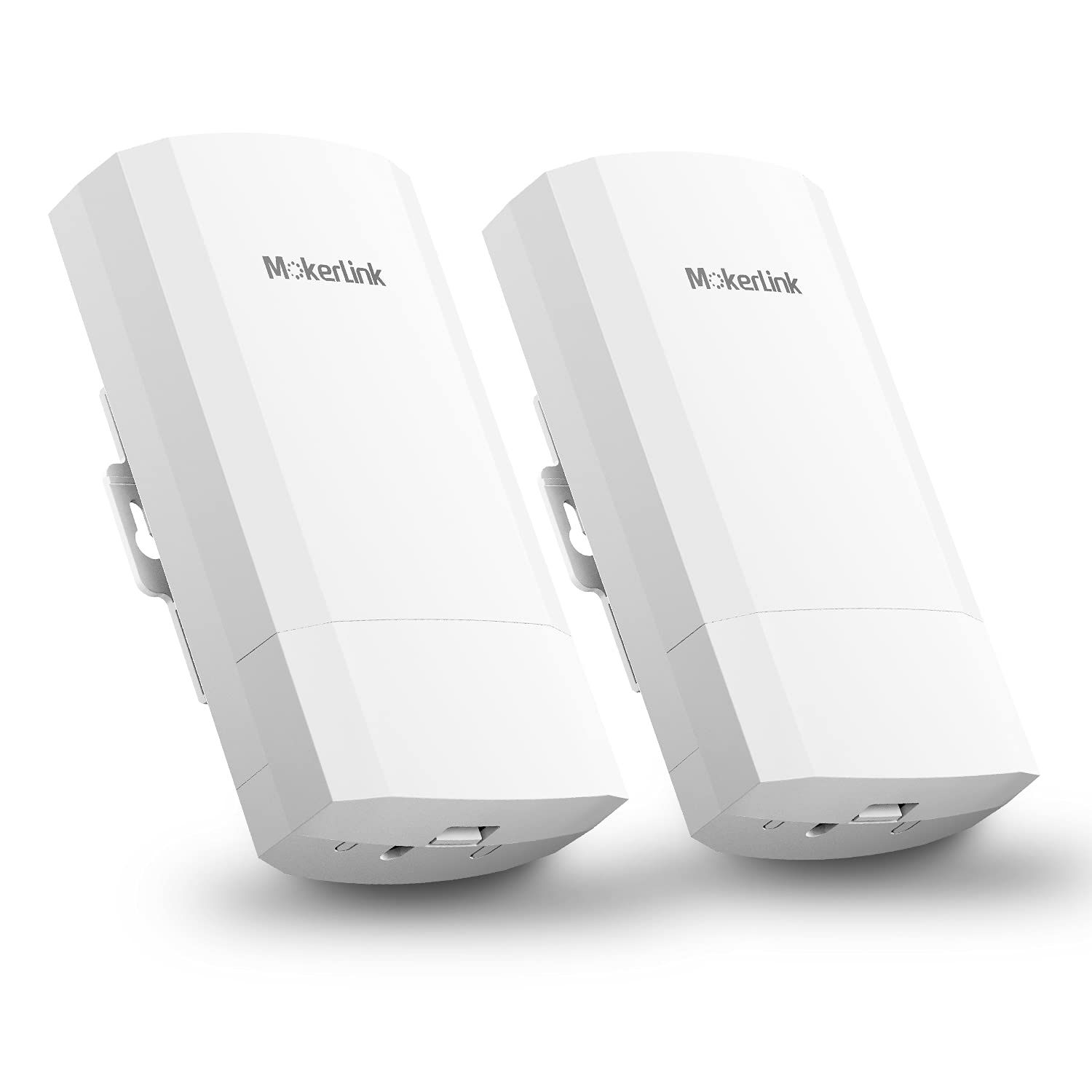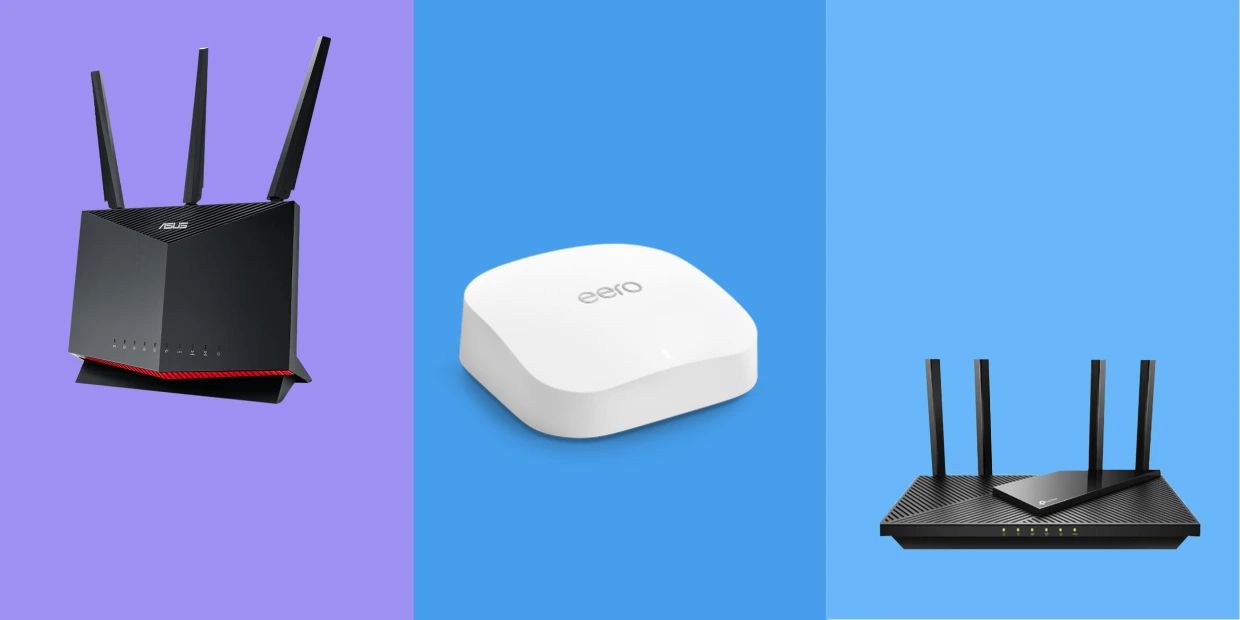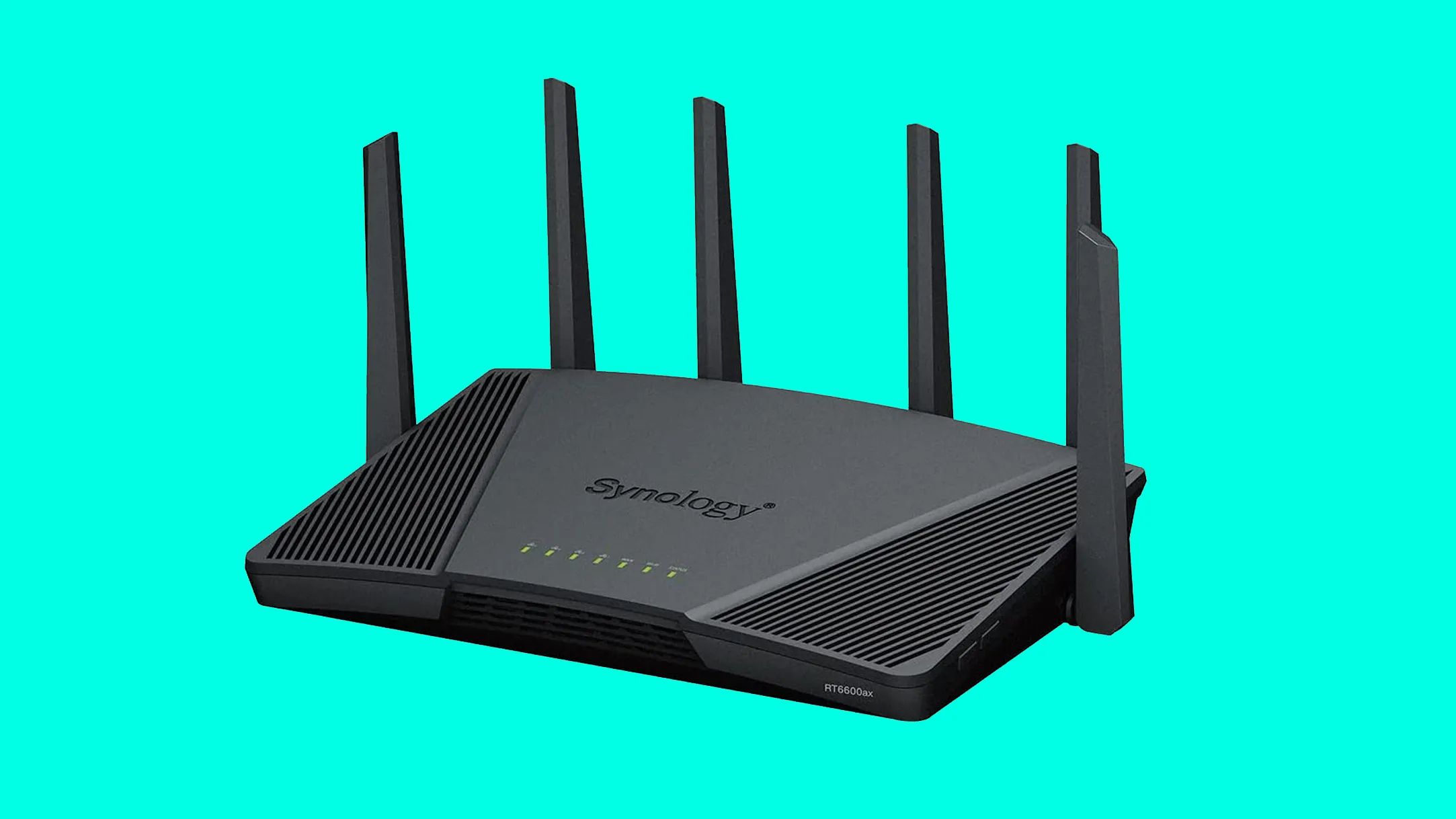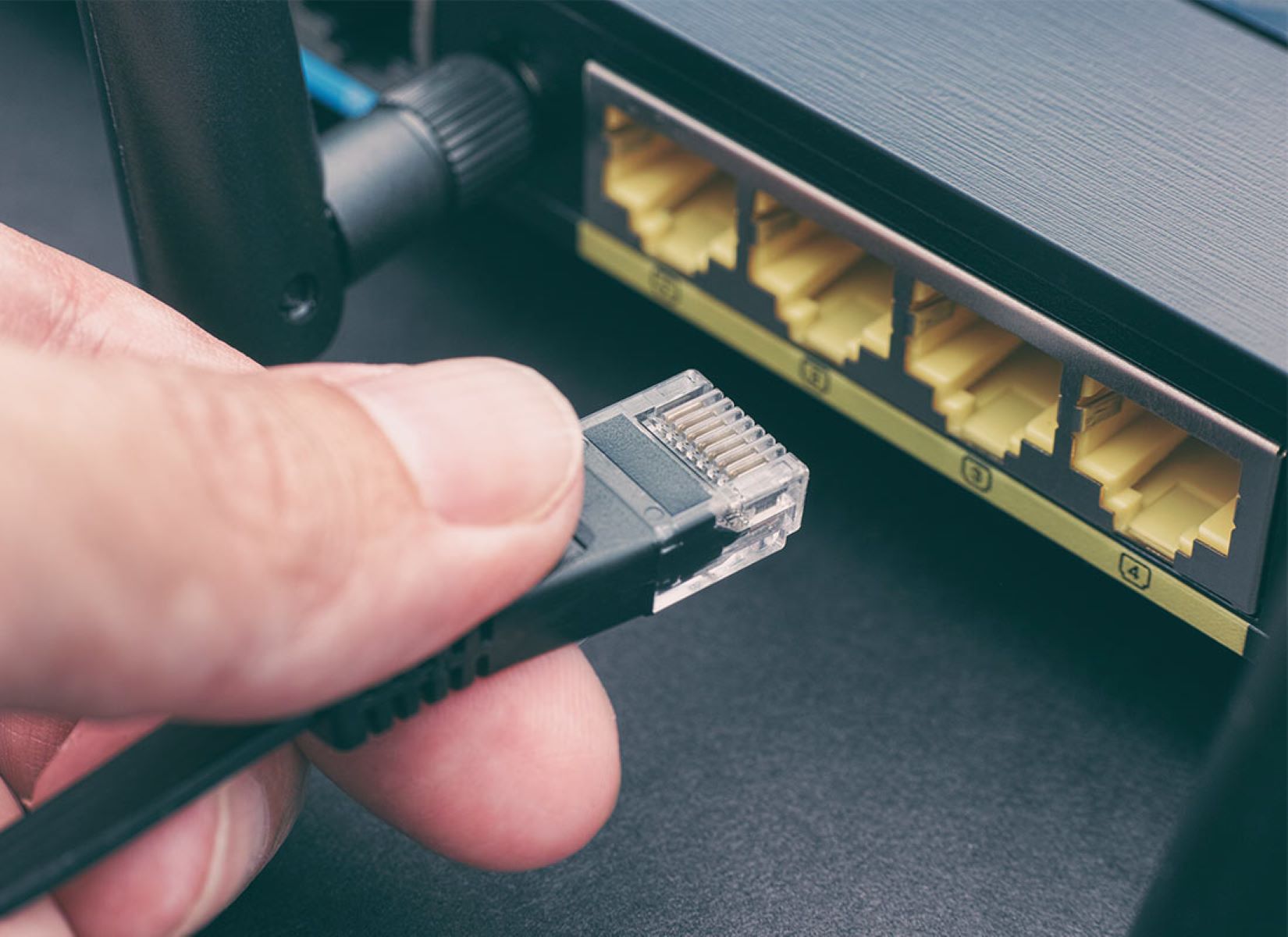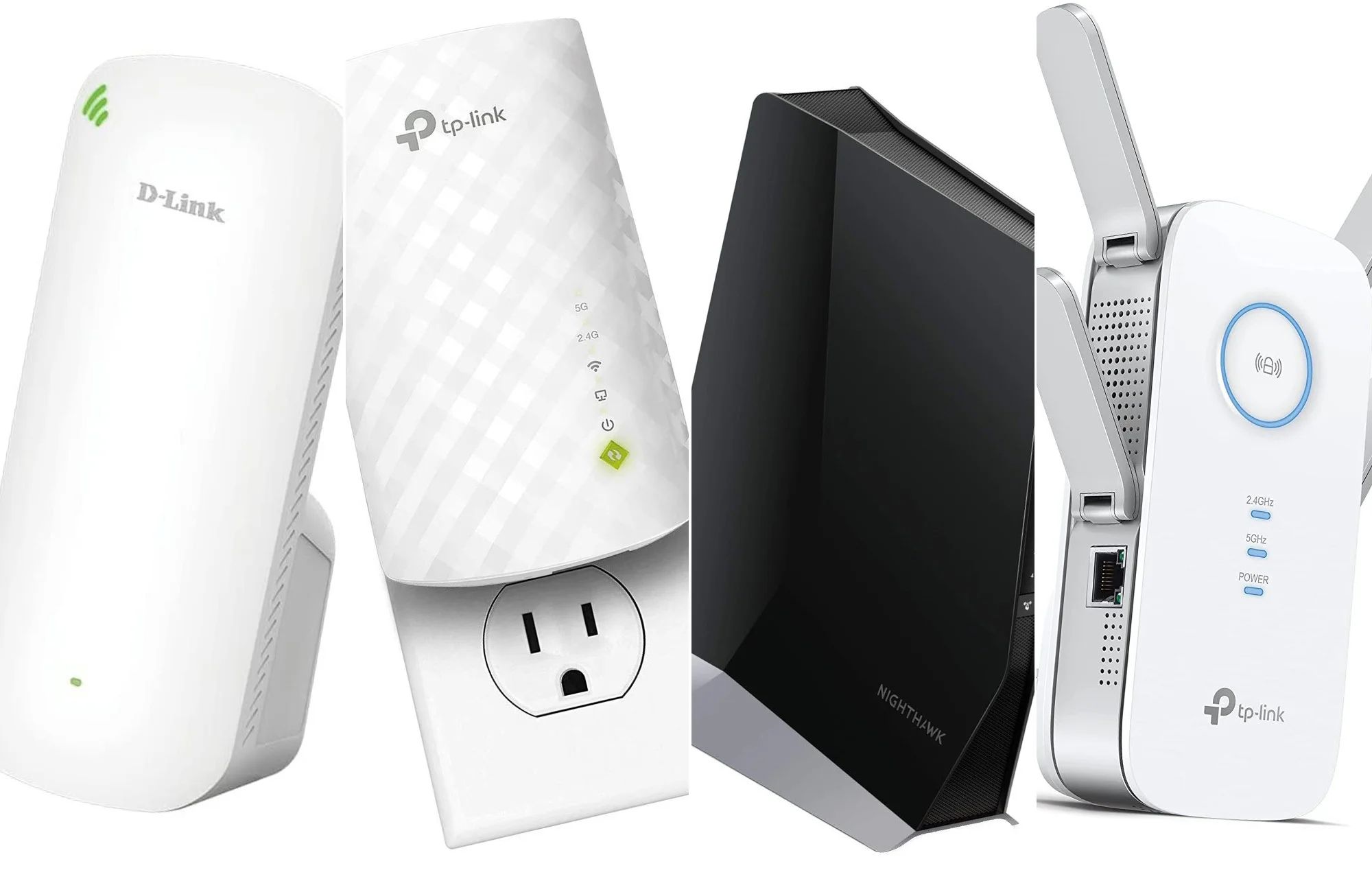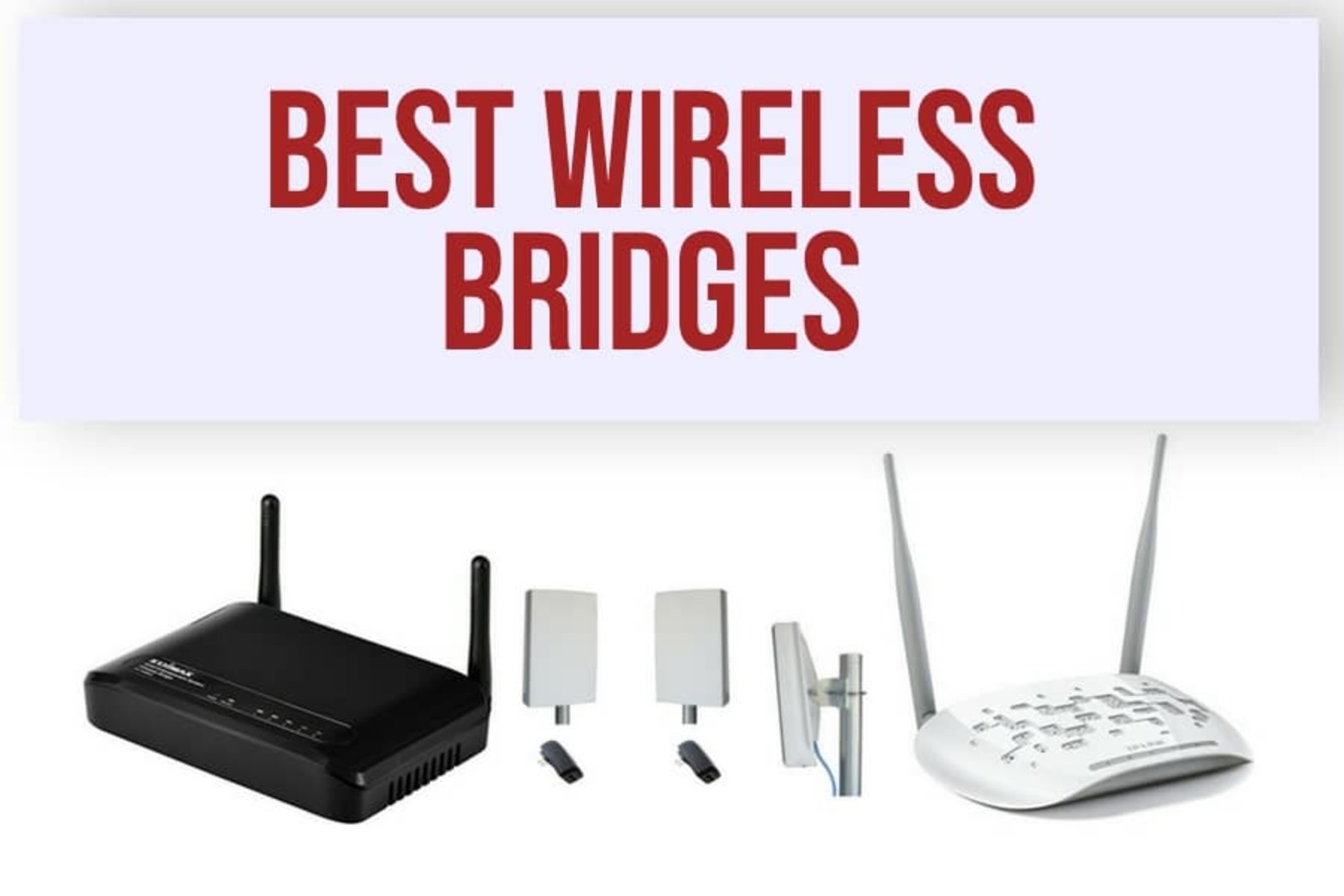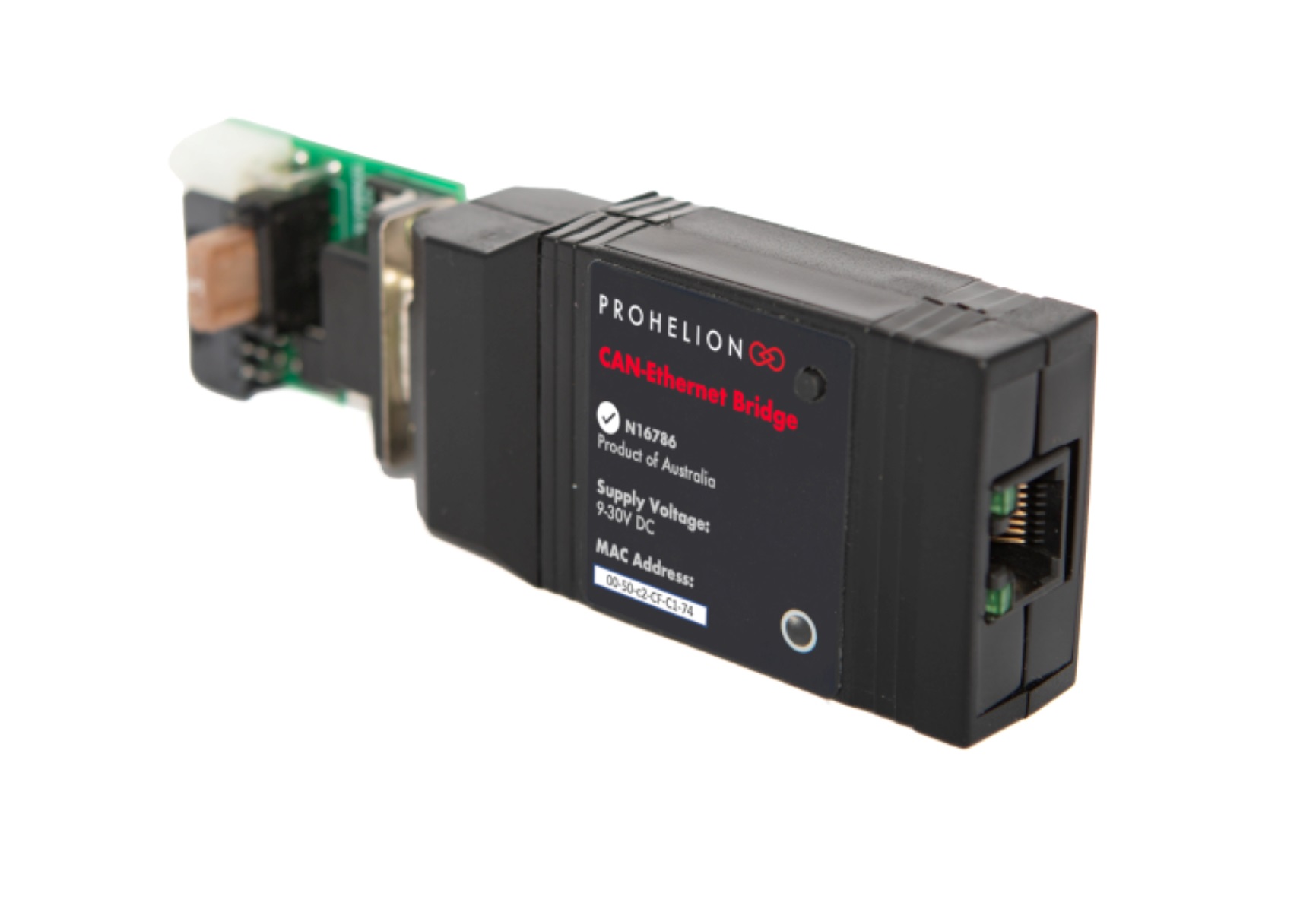Introduction
Wireless technology has revolutionized the way we connect and communicate. From smartphones to smart homes, we rely on wireless networks for seamless connectivity. One key component of these networks is a wireless bridge. But what exactly is a wireless bridge and how does it work?
A wireless bridge acts as a connection point between two separate networks, allowing devices to communicate and share data wirelessly. It bridges the gap between wired and wireless networks, extending the benefits of a wired network to wireless devices.
Imagine a scenario where you have a wired network in your office and you need to connect a remote building situated far away. Running physical network cables across long distances would be impractical and costly. This is where a wireless bridge comes into play. It provides a reliable and cost-effective solution by wirelessly connecting the two networks.
Wireless bridges utilize innovative technologies such as Wi-Fi or Bluetooth. They establish a wireless link between two access points, effectively extending the coverage range of a network. This means that devices connected to one access point can communicate with devices connected to another, as if they were directly connected through a physical cable.
The primary purpose of a wireless bridge is to eliminate the need for extensive wiring or infrastructure investments. It provides flexibility and scalability in network deployments, especially in situations where physical connections are not feasible or practical.
In the following sections, we will dive deeper into how a wireless bridge works, its advantages, common applications, and key considerations when setting up a wireless bridge. By the end, you will have a solid understanding of wireless bridges and how they can benefit your network setup.
Definition of a Wireless Bridge
A wireless bridge is a device or technology that connects two separate networks wirelessly, allowing communication and data transfer between them. It acts as a link between a wired network and a wireless network, creating a seamless connection between the two.
The main purpose of a wireless bridge is to extend the coverage range of a network without the need for physical network cables. It eliminates the limitations of wired connections, providing flexibility, convenience, and cost-effectiveness in network deployments.
A wireless bridge typically consists of two components: the access point and the bridge. The access point serves as the transmitter, broadcasting the wireless signal, while the bridge acts as the receiver, capturing and transferring the signal to the wired network.
To establish a wireless bridge connection, both access points must be configured with the same network settings, including the network name (SSID) and security settings. Once the connection is established, devices connected to one access point can communicate with devices connected to the other, as if they were directly connected through a physical cable.
Wireless bridges can operate using various wireless technologies, such as Wi-Fi or Bluetooth. Wi-Fi is the most commonly used technology for wireless bridges, offering high-speed and reliable connections over a considerable distance. Bluetooth, on the other hand, is suitable for short-range connections, typically used for connecting devices within close proximity.
It’s important to note that a wireless bridge differs from a wireless router. While both devices provide wireless connectivity, a wireless router also functions as a network gateway and typically includes additional features like DHCP server and firewall. A wireless bridge, on the other hand, focuses solely on establishing a wireless connection between networks without additional routing capabilities.
Overall, a wireless bridge acts as a crucial link in modern network setups, enabling seamless communication between wired and wireless devices. Its ability to extend network coverage and eliminate the need for physical cables makes it a valuable solution for various applications and environments.
How Does a Wireless Bridge Work?
Understanding how a wireless bridge works requires knowledge of its basic components and the technology behind it. As mentioned earlier, a wireless bridge consists of two key elements: the access point and the bridge.
The access point, also known as the transmitter, is responsible for broadcasting the wireless signal. It connects to the wired network and converts the data into a wireless format that can be transmitted. The access point typically has an antenna that amplifies the signal strength and ensures reliable transmission.
The bridge, on the other hand, acts as the receiver. It captures the wireless signal transmitted by the access point and converts it back into a wired format. The bridge then transfers the data to the wired network, allowing devices connected to the wired network to communicate with devices connected to the wireless network.
The wireless bridge operates on a specific wireless frequency, such as 2.4 GHz or 5 GHz, depending on the technology used. It uses radio waves to transmit and receive data, similar to how a Wi-Fi network functions. Different wireless bridge models may support different wireless standards, such as 802.11n, 802.11ac, or 802.11ax, which determine the speed and range of the wireless connection.
When setting up a wireless bridge, both access points must be configured with the same network settings, such as the network name (SSID) and security settings. This ensures that the access points can communicate with each other and establish a secure connection. Once the connection is established, devices connected to one access point can seamlessly communicate with devices connected to the other.
In terms of distance, the range of a wireless bridge depends on several factors, including the power of the wireless signal, environmental conditions, and potential obstructions. Generally, a wireless bridge can provide coverage over several hundred feet, but this can vary depending on the specific technology and equipment used.
It’s important to note that the performance and reliability of a wireless bridge can be affected by interference from other wireless devices, such as microwaves or cordless phones, as well as physical obstructions like walls or buildings. Proper placement of the access points and careful consideration of the network environment can help optimize the performance of the wireless bridge.
Overall, a wireless bridge enables seamless communication between wired and wireless networks by transmitting and receiving wireless signals. Its ability to convert data between wired and wireless formats makes it a valuable component in extending network coverage and providing connectivity in various scenarios.
Advantages of Using a Wireless Bridge
Using a wireless bridge offers several advantages over traditional wired connections. These advantages make wireless bridges a popular choice in various network setups and environments.
1. Flexibility and Scalability: Wireless bridges provide flexibility in network deployments, allowing connections to be established in locations where running physical network cables is impractical or costly. They can easily be installed and configured, making them a scalable solution as network needs grow or change.
2. Cost-Effective: Deploying a wireless bridge eliminates the need for extensive wiring infrastructure, saving both time and money. It reduces the costs associated with purchasing and installing network cables, connectors, and other hardware components required for wired connections.
3. Easy Setup and Installation: Setting up a wireless bridge is relatively straightforward compared to running physical network cables. It requires minimal technical expertise and can be done quickly without disruptions to the existing network infrastructure.
4. Extended Network Coverage: A wireless bridge extends the coverage range of a network without the limitations of wired connections. It allows devices to connect and communicate seamlessly across a larger area, including remote buildings or outdoor environments.
5. Mobility and Accessibility: Wireless bridges enable users to access the network from various devices and locations within the coverage area. They provide mobility and flexibility, allowing users to connect wirelessly from laptops, smartphones, tablets, and other wireless devices.
6. Reduced Cable Clutter: With a wireless bridge, there is no need for excessive network cables, leading to reduced cable clutter and a cleaner working environment. This can improve aesthetics, reduce maintenance efforts, and enhance overall workplace productivity.
7. Quick and Temporary Deployments: Wireless bridges are ideal for temporary network setups, such as at events, construction sites, or disaster recovery situations. They can be easily installed and removed without the need for permanent infrastructure.
8. Remote Connectivity: Wireless bridges facilitate connectivity between separate networks, even if they are physically located far apart. This makes them a valuable solution for connecting remote offices, multi-building campuses, or implementing network extensions in challenging environments.
Overall, the advantages of using a wireless bridge demonstrate its versatility and effectiveness in bridging the gap between wired and wireless networks. It offers flexibility, cost savings, and extended network coverage, making it an excellent choice in various scenarios where wired connections are impractical or not feasible.
Common Applications for Wireless Bridges
Wireless bridges have a wide range of applications across different industries and environments. Their flexibility, cost-effectiveness, and extended network coverage make them a valuable solution in various scenarios. Here are some common applications for wireless bridges:
1. Connecting Remote Buildings: Wireless bridges are commonly used to connect separate buildings within a campus or organization. Instead of laying physical cables between buildings, a wireless bridge can establish a reliable connection, providing seamless network access across the entire area.
2. Outdoor Connectivity: Wireless bridges are ideal for extending network coverage to outdoor environments, such as parking lots, outdoor venues, or large open spaces. They allow wireless devices to connect to the network without the limitations of physical barriers.
3. Connecting IoT Devices: The Internet of Things (IoT) relies heavily on wireless connectivity. Wireless bridges can connect IoT devices, enabling them to communicate with each other and transfer data to the network. This is especially useful in smart homes, industrial automation, and smart city applications.
4. Temporary Networks: Wireless bridges are commonly used to establish temporary networks for events, conferences, or construction sites. They can be quickly deployed and easily removed once the event or project is complete, without the need for extensive wiring infrastructure.
5. Multi-Office Connectivity: Organizations with multiple offices or locations can use wireless bridges to connect their networks. This allows for seamless communication and data transfer between the different locations, enhancing collaboration and efficiency.
6. Surveillance Systems: Wireless bridges can be utilized in security and surveillance systems. They allow cameras and other surveillance devices to connect to the network wirelessly, eliminating the need for costly and complex wiring installations.
7. Internet Service Providers (ISPs): ISPs can use wireless bridges to provide internet connectivity to areas where wired connections are not feasible, such as rural or remote locations. Wireless bridges offer a cost-effective solution for extending internet access to underserved areas.
8. Point-to-Point Connectivity: Wireless bridges are often used for point-to-point connections between two specific locations. This can include connecting a main office to a branch office, a house to an outbuilding, or any other scenario where a direct wireless link is required.
9. Seamless Roaming: Wireless bridges enable seamless roaming within a network, allowing devices to connect and switch between access points without interruption. This is particularly important in large environments, such as airports, shopping malls, or university campuses.
These are just a few examples of the many potential applications for wireless bridges. The versatility and functionality of wireless bridges make them a valuable tool in enhancing network connectivity and expanding network coverage in countless scenarios.
Considerations When Setting Up a Wireless Bridge
Setting up a wireless bridge requires careful planning and consideration to ensure optimal performance and reliability. Here are some key considerations to keep in mind when setting up a wireless bridge:
1. Line of Sight: For a wireless bridge to function effectively, there should be a clear line of sight between the access points. Physical obstacles such as buildings, trees, or other structures can interfere with the wireless signal and reduce performance. Conduct a thorough site survey to identify any potential obstructions and plan for proper placement of the access points.
2. Wireless Interference: Wireless bridges operate on specific wireless frequencies, which can be prone to interference from other devices. It’s important to identify potential sources of interference, such as microwave ovens, cordless phones, or neighboring Wi-Fi networks, and select a wireless channel with minimal interference. Keeping access points away from sources of interference can help optimize performance.
3. Security: Wireless bridges transmit data wirelessly, which means there is a risk of unauthorized access. Ensure that the wireless bridge is properly secured by implementing strong encryption, such as WPA2 or WPA3, and using unique and strong passwords. Regularly update the firmware of the access points to patch any security vulnerabilities.
4. Bandwidth Requirements: Consider the bandwidth requirements of the connected devices and the network as a whole. Ensure that the wireless bridge and access points can support the required bandwidth to handle the expected data traffic. Higher bandwidth requirements may necessitate the use of more advanced wireless technologies, such as 802.11ac or 802.11ax.
5. Power Source: Ensure that both the access points and the wireless bridge have a reliable power source. Depending on the location and setup, this could involve connecting to an electrical outlet or utilizing Power over Ethernet (PoE) technology for convenient power and data transmission over a single Ethernet cable.
6. Security Considerations: In addition to securing the wireless connection, consider other security measures for the network. Implementing a firewall and configuring access controls can help protect the network from potential threats and unauthorized access.
7. Maintenance and Monitoring: Regularly monitor the performance of the wireless bridge and access points to ensure they are functioning optimally. Keep firmware and software up to date to take advantage of any performance enhancements or security fixes.
8. Scalability and Future Expansion: Consider the scalability of the wireless bridge setup and whether it can accommodate future expansions or increased data traffic. Choosing equipment and technology that supports scalability will prevent the need for frequent replacement or major infrastructure changes down the line.
Taking these considerations into account when setting up a wireless bridge will help ensure a reliable and efficient network connection. By addressing potential obstacles, optimizing performance, and implementing proper security measures, the wireless bridge can provide seamless connectivity between networks and enhance overall network performance.
Choosing the Right Wireless Bridge for Your Needs
Choosing the right wireless bridge is key to ensuring a successful and efficient network setup. Here are some factors to consider when selecting a wireless bridge for your specific needs:
1. Speed and Bandwidth: Consider the speed and bandwidth requirements of your network. Determine the maximum data transfer speeds needed and choose a wireless bridge that supports those speeds. If you anticipate heavy data traffic or large file transfers, opt for a bridge that offers higher bandwidth capabilities.
2. Wireless Standards: Make sure the wireless bridge supports the necessary wireless standards for your network. Common standards include 802.11n, 802.11ac, and 802.11ax. The right standard will depend on your network devices and the level of performance and range you require.
3. Range and Coverage: Evaluate the range and coverage capabilities of the wireless bridge. Consider factors such as building materials, obstructions, and the distance between access points. Select a bridge that can provide reliable coverage in the desired area, while also accounting for future expansion if needed.
4. Security Features: Ensure that the wireless bridge offers robust security features. Look for bridges that support encryption protocols like WPA2 or WPA3 for securing the wireless connection. Additional features like MAC address filtering and VLAN support can enhance the overall network security.
5. Power over Ethernet (PoE) Support: Consider whether you require Power over Ethernet (PoE) support for easy installation and flexibility in power sourcing. PoE eliminates the need for separate power outlets near the access points and simplifies cable management.
6. Scalability: If you anticipate network expansion in the future or increased data traffic, consider a wireless bridge that offers scalability. This allows you to easily add more access points or upgrade to higher-capacity models without significant disruptions to the network.
7. Management and Monitoring: Evaluate the management and monitoring capabilities of the wireless bridge. Look for bridges that offer centralized management options, allowing you to efficiently monitor and configure the access points from a single interface. This can simplify network administration and troubleshooting.
8. Budget: Lastly, consider your budget constraints. Wireless bridges come in various price ranges, so determine the features and performance level you need within your budget. Keep in mind that investing in a higher-quality, more reliable bridge may save you costs in the long run by minimizing downtime and maintenance.
By carefully considering these factors, you can choose the right wireless bridge that aligns with your network requirements and provides stable, secure, and fast wireless connectivity throughout your organization.
Conclusion
Wireless bridges are a crucial component of modern network setups, enabling seamless connectivity between wired and wireless networks. By bridging the gap and extending the coverage range of networks, wireless bridges offer numerous benefits and applications in various industries and environments.
Throughout this article, we have explored the definition of a wireless bridge, how it works, its advantages, common applications, and key considerations when setting up a wireless bridge. Understanding these aspects is essential for making informed decisions when implementing a wireless bridge in your network infrastructure.
Wireless bridges provide flexibility, cost-effectiveness, and extended network coverage, allowing organizations and individuals to connect remote buildings, establish outdoor connectivity, connect IoT devices, and create temporary networks, among many other applications. They offer mobility, scalability, and reduced cable clutter, enhancing the overall efficiency and productivity of network setups.
When setting up a wireless bridge, it is important to consider factors such as line of sight, wireless interference, security, bandwidth requirements, power source, maintenance, and scalability. By addressing these considerations, you can optimize the performance, reliability, and security of your wireless bridge setup.
Lastly, choosing the right wireless bridge involves evaluating factors such as speed and bandwidth, wireless standards, range and coverage, security features, PoE support, scalability, management and monitoring options, and budget constraints. By selecting a wireless bridge that meets your specific needs, you can ensure a successful and efficient network deployment.
In conclusion, wireless bridges play a crucial role in integrating wired and wireless networks, expanding network coverage, and enabling seamless connectivity. With their numerous advantages and diverse applications, wireless bridges are an essential tool in modern network setups, providing flexibility, scalability, and convenience for a wide range of users and industries.









